Abstract
HR810 (Hoechst-Roussel Pharmaceuticals Inc., Somerville, N.J.) is a new, cyclical-pyridinium cephalosporin that appeared superior to numerous comparison drugs against 658 strains of aerobic and facultative anaerobic bacteria. Seventeen Enterobacteriaceae spp. were tested by broth microdilution methods, and the 50% MICs (MIC50S) and 90% MICs (MIC90s) were 0.03 to 0.12 and 0.03 to 2.0 micrograms/ml, respectively. Only one strain had an MIC greater than 8.0 micrograms/ml (99.6% is considered susceptible). HR810 inhibited 98% of Pseudomonas aeruginosa isolates at less than or equal to 16 micrograms/ml, and the MIC90 for Acinetobacter spp. was 4.0 micrograms/ml. It was also very active against Pseudomonas spp. and Staphylococcus aureus (MIC90, 0.5 micrograms/ml) but marginally active against methicillin-resistant staphylococcal strains (MIC90, 16 micrograms/ml) and enterococcus (MIC90, 32 micrograms/ml). Non-enterococcal streptococci had MIC50s ranging from 0.008 micrograms/ml for Streptococcus pyogenes to 0.12 micrograms/ml for pneumococci. All MICs of HR810 against Haemophilus and Neisseria spp. were less than or equal to 0.03 micrograms/ml (MIC50, 0.002 to 0.008 micrograms/ml). HR810 poorly inhibited beta-lactamases and was very stable against 11 tested beta-lactamases of plasmid (TEM, OXA, SHV-1, and PSE) and chromosomal (K1, K14, P99) types.
Full text
PDF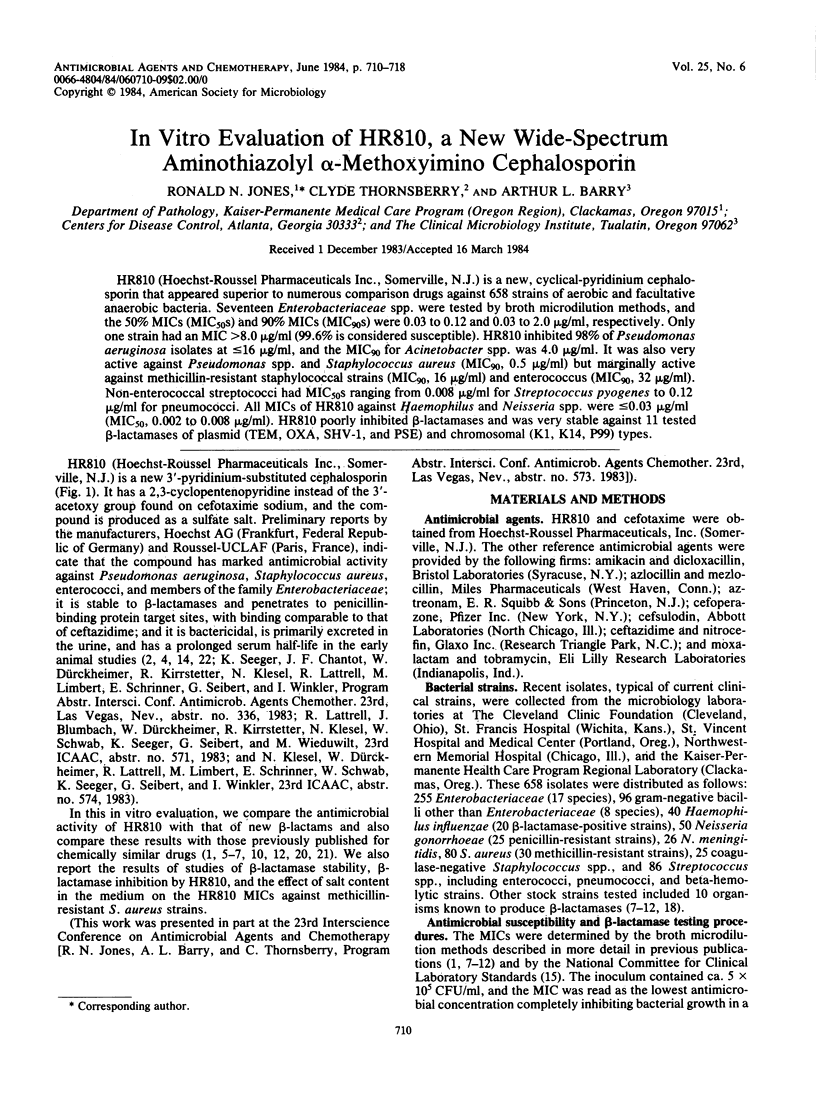
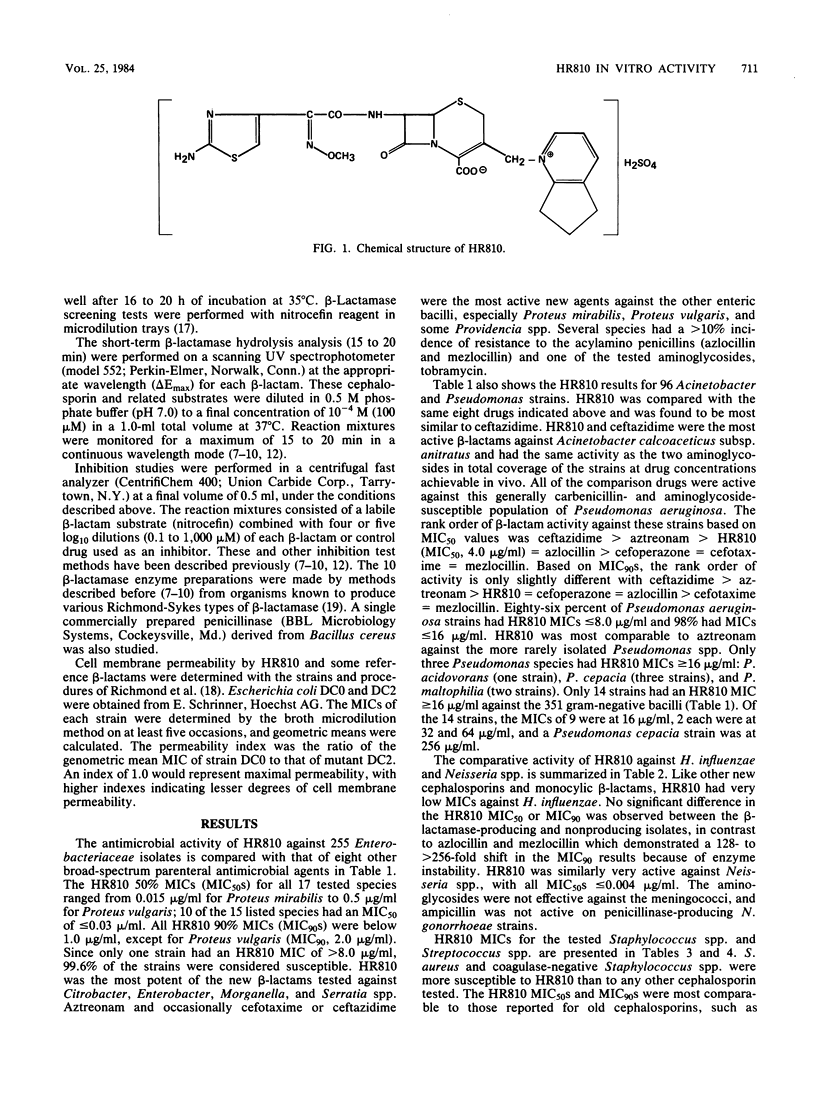
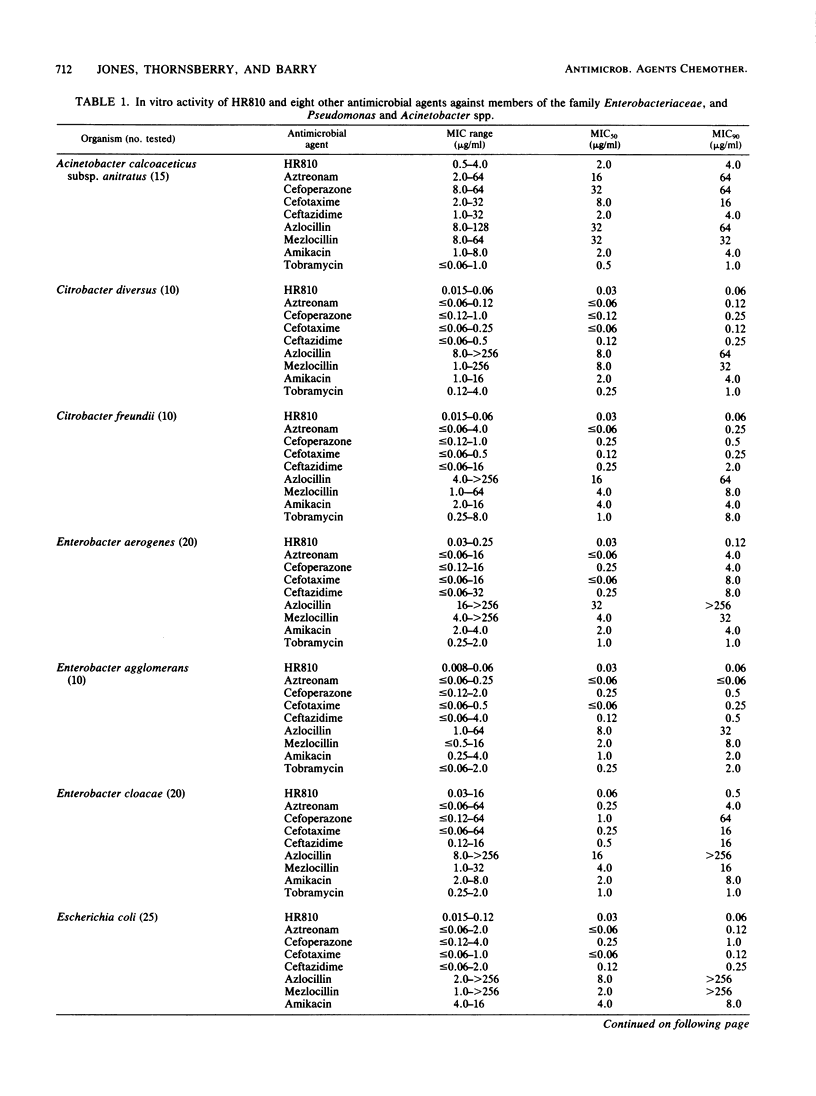
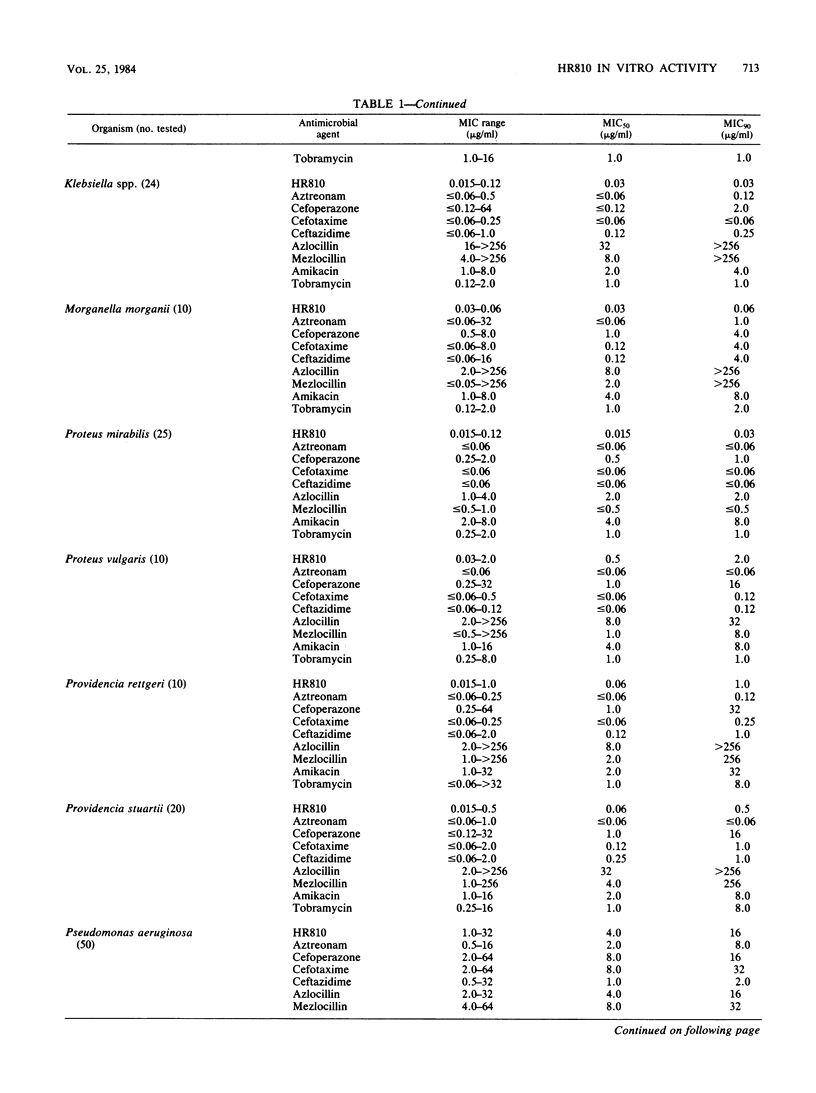
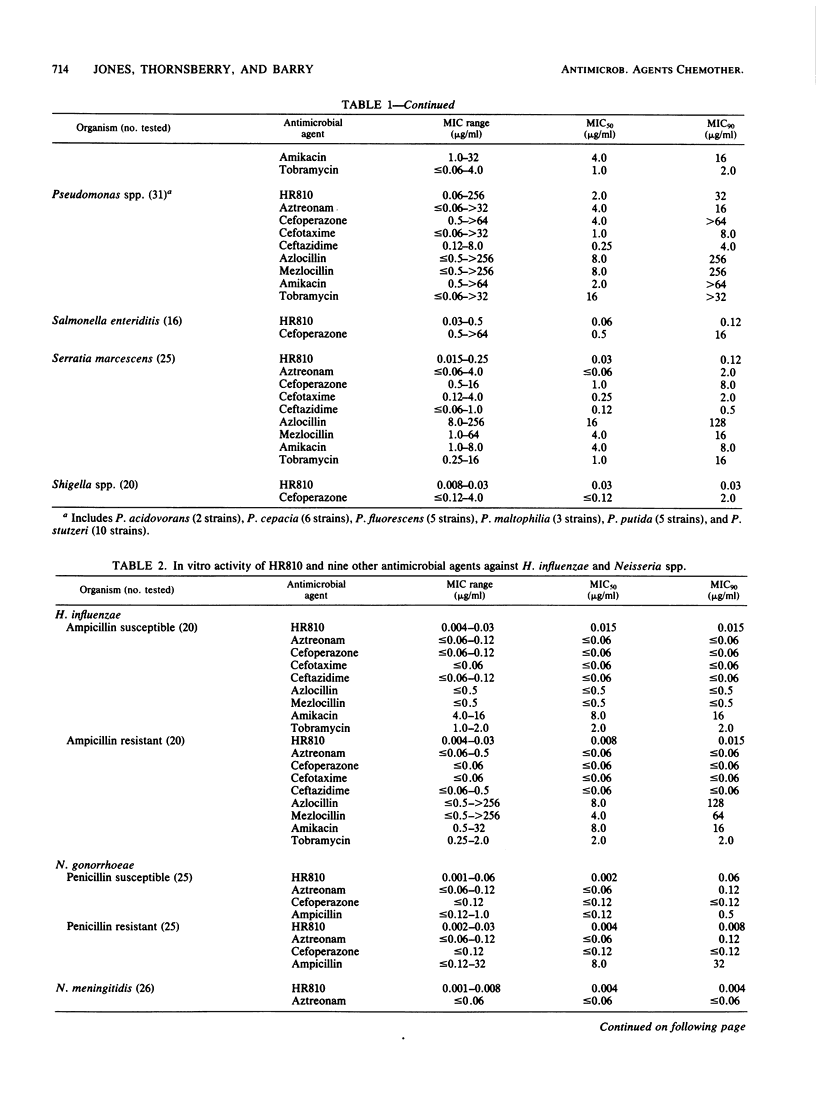
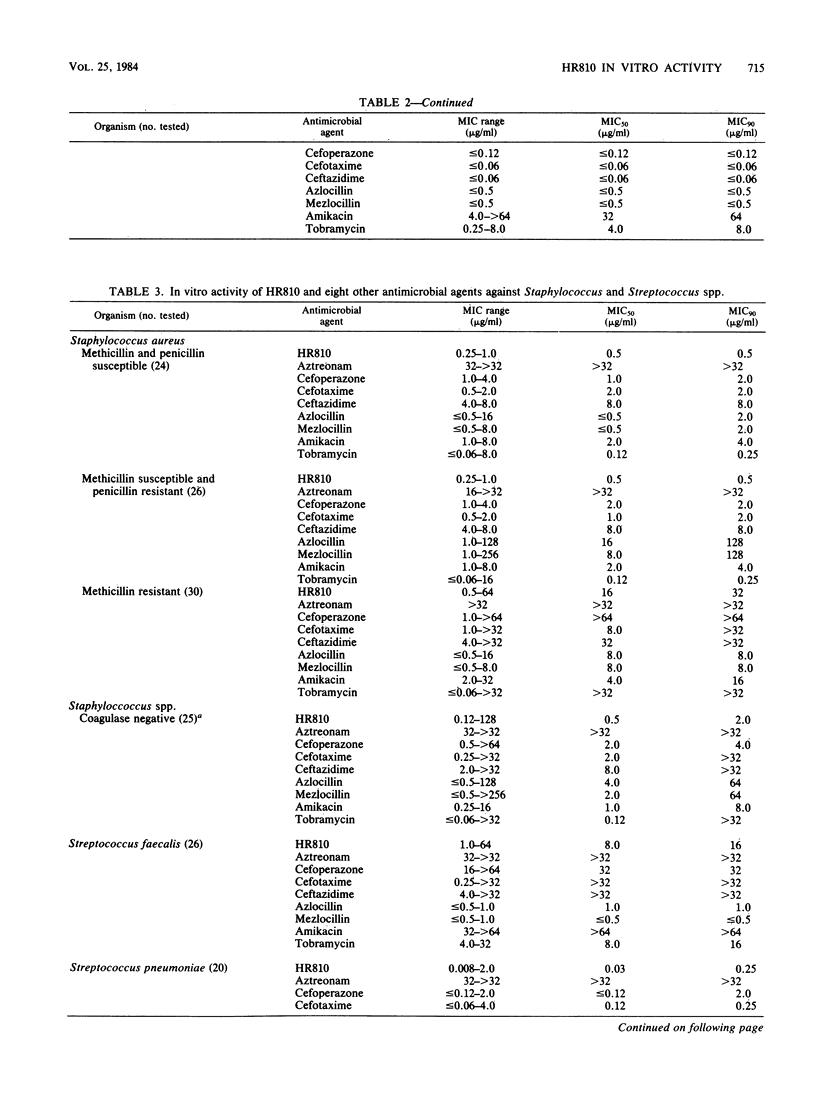
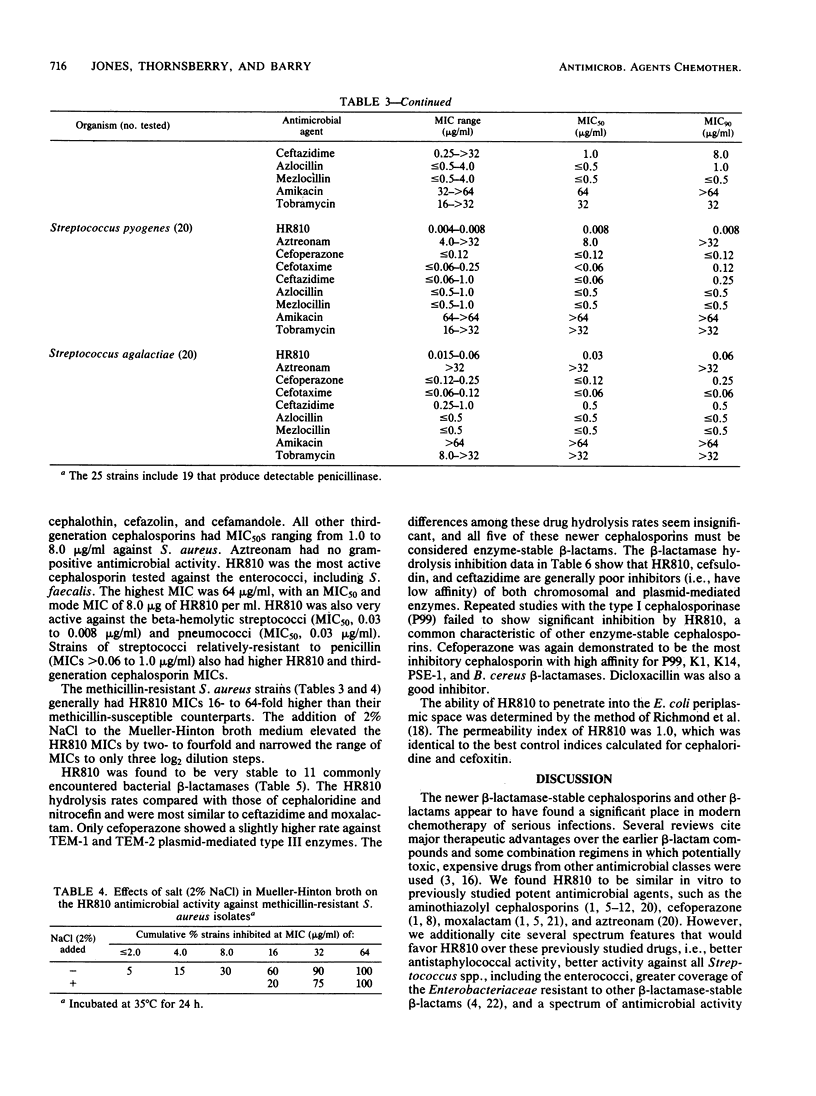
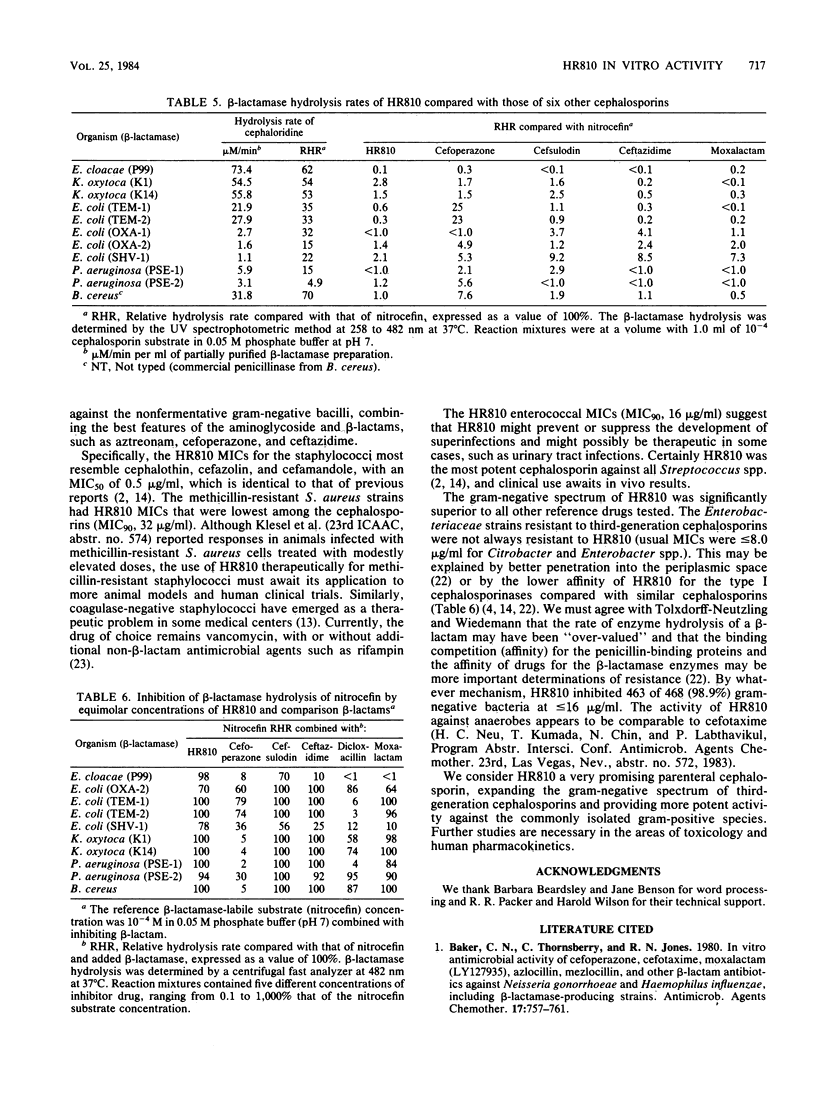

Selected References
These references are in PubMed. This may not be the complete list of references from this article.
- Baker C. N., Thornsberry C., Jones R. N. In vitro antimicrobial activity of cefoperazone, cefotaxime, moxalactam (LY127935), azlocillin, mezlocillin, and other beta-lactam antibiotics against Neisseria gonorrhoeae and Haemophilus influenzae, including beta-lactamase-producing strains. Antimicrob Agents Chemother. 1980 Apr;17(4):757–761. doi: 10.1128/aac.17.4.757. [DOI] [PMC free article] [PubMed] [Google Scholar]
- Bauernfeind A. Susceptibility of gram-positive aerobic cocci to the new cephalosporin HR 810. Eur J Clin Microbiol. 1983 Aug;2(4):354–355. doi: 10.1007/BF02019468. [DOI] [PubMed] [Google Scholar]
- Brooks G. F., Barriere S. L. Clinical use of the new beta-lactam antimicrobial drugs. Practical considerations for physicians, microbiology laboratories, pharmacists, and formulary committees. Ann Intern Med. 1983 Apr;98(4):530–535. doi: 10.7326/0003-4819-98-4-530. [DOI] [PubMed] [Google Scholar]
- Cullmann W., Opferkuch W., Stieglitz M. Relation between beta-lactamase production and antimicrobial activity: comparison of the new compound HR 810 with cefotaxime. Eur J Clin Microbiol. 1983 Aug;2(4):350–352. doi: 10.1007/BF02019466. [DOI] [PubMed] [Google Scholar]
- Fu K. P., Neu H. C. Antibacterial activity of ceftizoxime, a beta-lactamase-stable cephalosporin. Antimicrob Agents Chemother. 1980 Apr;17(4):583–590. doi: 10.1128/aac.17.4.583. [DOI] [PMC free article] [PubMed] [Google Scholar]
- Fu K. P., Neu H. C. The comparative beta-lactamase resistance and inhibitory activity of 1-oxa cephalosporin, cefoxitin and cefotaxime. J Antibiot (Tokyo) 1979 Sep;32(9):909–914. doi: 10.7164/antibiotics.32.909. [DOI] [PubMed] [Google Scholar]
- Fuchs P. C., Jones R. N., Thornsberry C., Barry A. L., Gerlach E. H., Sommers H. M. Cefmenoxime (SCE-1365), a new cephalosporin: in vitro activity, comparison with other antimicrobial agents, beta-lactamase stability, and disk diffusion testing with tentative interpretive criteria. Antimicrob Agents Chemother. 1981 Dec;20(6):747–759. doi: 10.1128/aac.20.6.747. [DOI] [PMC free article] [PubMed] [Google Scholar]
- Jones R. N., Barry A. L. Cefoperazone: a review of its antimicrobial spectrum, beta-lactamase stability, enzyme inhibition, and other in vitro characteristics. Rev Infect Dis. 1983 Mar-Apr;5 (Suppl 1):S108–S126. doi: 10.1093/clinids/5.supplement_1.s108. [DOI] [PubMed] [Google Scholar]
- Jones R. N., Barry A. L., Thornsberry C., Wilson H. W. In vitro antimicrobial activity evaluation of cefodizime (HR221), a new semisynthetic cephalosporin. Antimicrob Agents Chemother. 1981 Dec;20(6):760–768. doi: 10.1128/aac.20.6.760. [DOI] [PMC free article] [PubMed] [Google Scholar]
- Jones R. N., Thornsberry C. Cefotaxime: a review of in vitro antimicrobial properties and spectrum of activity. Rev Infect Dis. 1982 Sep-Oct;4 (Suppl):S300–S315. doi: 10.1093/clinids/4.supplement_2.s300. [DOI] [PubMed] [Google Scholar]
- Jones R. N., Wilson H. W. Antimicrobial activity, beta-lactamase stability and beta-lactamase inhibition of cefotetan and other 7-alpha-methoxy beta-lactam antimicrobials. Diagn Microbiol Infect Dis. 1983 Mar;1(1):71–83. doi: 10.1016/0732-8893(83)90035-4. [DOI] [PubMed] [Google Scholar]
- Karchmer A. W., Archer G. L., Dismukes W. E. Staphylococcus epidermidis causing prosthetic valve endocarditis: microbiologic and clinical observations as guides to therapy. Ann Intern Med. 1983 Apr;98(4):447–455. doi: 10.7326/0003-4819-98-4-447. [DOI] [PubMed] [Google Scholar]
- Machka K., Braveny I. In vitro activity of HR 810, a new broad-spectrum cephalosporin. Eur J Clin Microbiol. 1983 Aug;2(4):345–349. doi: 10.1007/BF02019465. [DOI] [PubMed] [Google Scholar]
- Neu H. C. The new beta-lactamase-stable cephalosporins. Ann Intern Med. 1982 Sep;97(3):408–419. doi: 10.7326/0003-4819-97-3-408. [DOI] [PubMed] [Google Scholar]
- O'Callaghan C. H., Morris A., Kirby S. M., Shingler A. H. Novel method for detection of beta-lactamases by using a chromogenic cephalosporin substrate. Antimicrob Agents Chemother. 1972 Apr;1(4):283–288. doi: 10.1128/aac.1.4.283. [DOI] [PMC free article] [PubMed] [Google Scholar]
- Richmond M. H., Clark D. C., Wotton S. Indirect method for assessing the penetration of beta-lactamase-nonsusceptible penicillins and cephalosporins in Escherichia coli strains. Antimicrob Agents Chemother. 1976 Aug;10(2):215–218. doi: 10.1128/aac.10.2.215. [DOI] [PMC free article] [PubMed] [Google Scholar]
- Richmond M. H., Sykes R. B. The beta-lactamases of gram-negative bacteria and their possible physiological role. Adv Microb Physiol. 1973;9:31–88. doi: 10.1016/s0065-2911(08)60376-8. [DOI] [PubMed] [Google Scholar]
- Shannon K., King A., Warren C., Phillips I. In vitro antibacterial activity and susceptibility of the cephalosporin Ro 13-9904 to beta-lactamases. Antimicrob Agents Chemother. 1980 Aug;18(2):292–298. doi: 10.1128/aac.18.2.292. [DOI] [PMC free article] [PubMed] [Google Scholar]
- Sykes R. B., Bonner D. P., Bush K., Georgopapadakou N. H., Wells J. S. Monobactams--monocyclic beta-lactam antibiotics produced by bacteria. J Antimicrob Chemother. 1981 Dec;8 (Suppl E):1–16. doi: 10.1093/jac/8.suppl_e.1. [DOI] [PubMed] [Google Scholar]
- Tolxdorff-Neutzling R. M., Wiedemann B. HR 810, a cephalosporin with low affinity for Enterobacter cloacae beta-lactamase. Eur J Clin Microbiol. 1983 Aug;2(4):352–354. doi: 10.1007/BF02019467. [DOI] [PubMed] [Google Scholar]
- Watanakunakorn C. Treatment of infections due to methicillin-resistant Staphylococcus aureus. Ann Intern Med. 1982 Sep;97(3):376–378. doi: 10.7326/0003-4819-97-3-376. [DOI] [PubMed] [Google Scholar]


